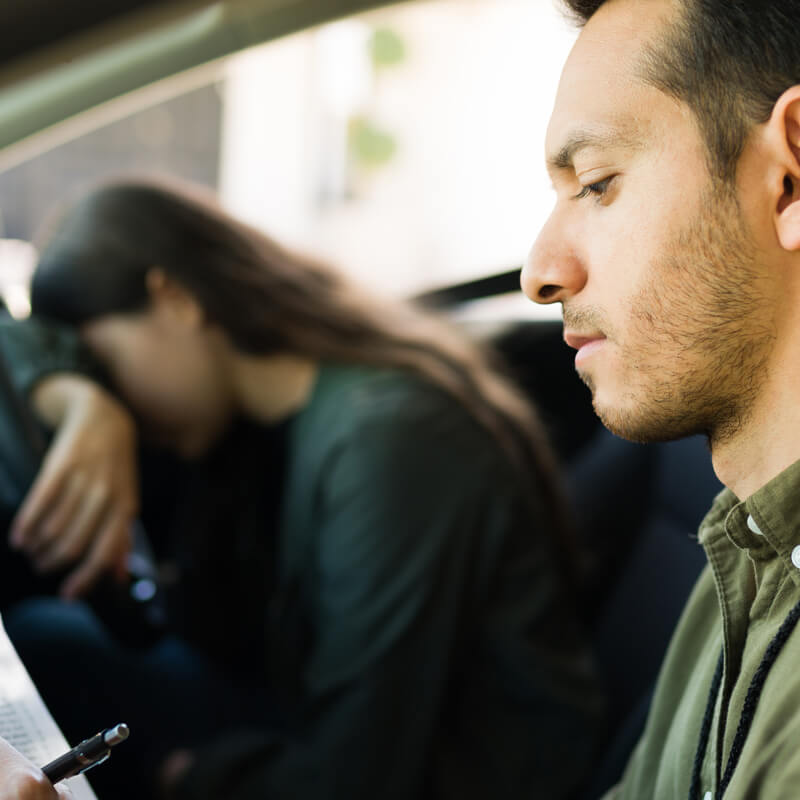Complete learner driver guide to roundabouts

How to deal with roundabouts as a learner driver
Roundabouts are circular junctions that are designed to allow traffic to keep moving, where possible, without necessarily having to stop, with all traffic travelling from right to left, clockwise. They come in many sizes; some even have traffic lights, but whatever the size, dealing with roundabouts as a learner driver is fairly easy.
Basically, you need to remember that you should give way to traffic on the roundabout coming from your immediate right.
Use the Mirror – Signal – Position – Speed – Look routine

When approaching a roundabout, you must give way to the traffic coming from your immediate right. Stop at the give way line if you have to.
1. On approach check your mirrors; signal your intended direction. This depends on whether you want to go left, right or ahead. Use any roadside diagram to help you plan.
2. First exit (left turn) on a roundabout.
Position your vehicle on the left and slow down to a reasonable speed so you can stop or go depending on what you see.
Select the correct gear, with the intention of moving onto the roundabout but be prepared to stop at the give way line; you must give way to traffic already on the roundabout.
3. If you wish to go straight on at the roundabout, then don’t signal on approach, but again you keep to the left.
Signal left once you pass the exit before the one you want. Take particular care to look into your left wing mirror to make certain you are not endangering others.
4. Turning right at a roundabout. This is any exit on the right-hand half of the roundabout as you approach.
Check mirrors to the right, signal to the right, position on the right on approach if you can and enter the roundabout when it is clear enough to do so; positioning your vehicle towards the right-hand lane. You will have to change lanes before turning off.
As you approach your intended exit, check mirrors and signal left, just after the exit before the one you want. Make good use of the left mirror before you move over and leave by the next exit. Watch out for pedestrians crossing the exits.
Once you have exited the roundabout, check mirrors and also check that you’ve cancelled your indicator signal.
5. Mini-roundabouts are smaller and have a flat centre for larger vehicles which may be too big to get around.
Approach in the same way as a large roundabout, but you will not need the second signal when leaving. Signal for the left, or the right, or not at all, if you are going ahead. Go with caution at all times.
6. Cyclists and horse riders will travel the roundabout on the outer lane, so take care when you see them, allow them plenty of room.
7. Some larger roundabouts have multiple lanes. Use the most appropriate lane for your exit. Left lane going left, right lane for right turns, and the centre lane for straight ahead.
Obey any traffic lights you come across on these roundabouts. Some also have traffic management instructions painted on the road, or on the signs, to give you information about which is the correct lane for your journey – read these signs to assist getting the correct lane.
If you have to change lanes, then so do extremely carefully, with adequate mirror and blind spot checks and good signals.
9. Some larger roundabouts have traffic lights to ease the flow of the traffic and allow everyone the opportunity to get onto a busy roundabout. These are especially common near motorways.
Roundabouts can be taxing, so if you do get into the wrong lane, especially when taking a right turn, and cannot safely exit at the desired point, check mirrors, signal right, go around and do it again; this time making better preparations.
If you signal left too early, and you cannot safely adjust this without danger, then take that exit, even though it might be the wrong one. It is better to turn around in a side street, and go back to the roundabout and try again, rather than cause a collision on the roundabout by making bad and late direction changes.
If you’re revising for the Driving Theory Test and are determined to pass the first time, then using the award-winning Driving Theory Test 4 in 1 App is a perfect solution; it even contains the full Highway Code, a quiz, progress monitor and much more – all for just £4.99!


